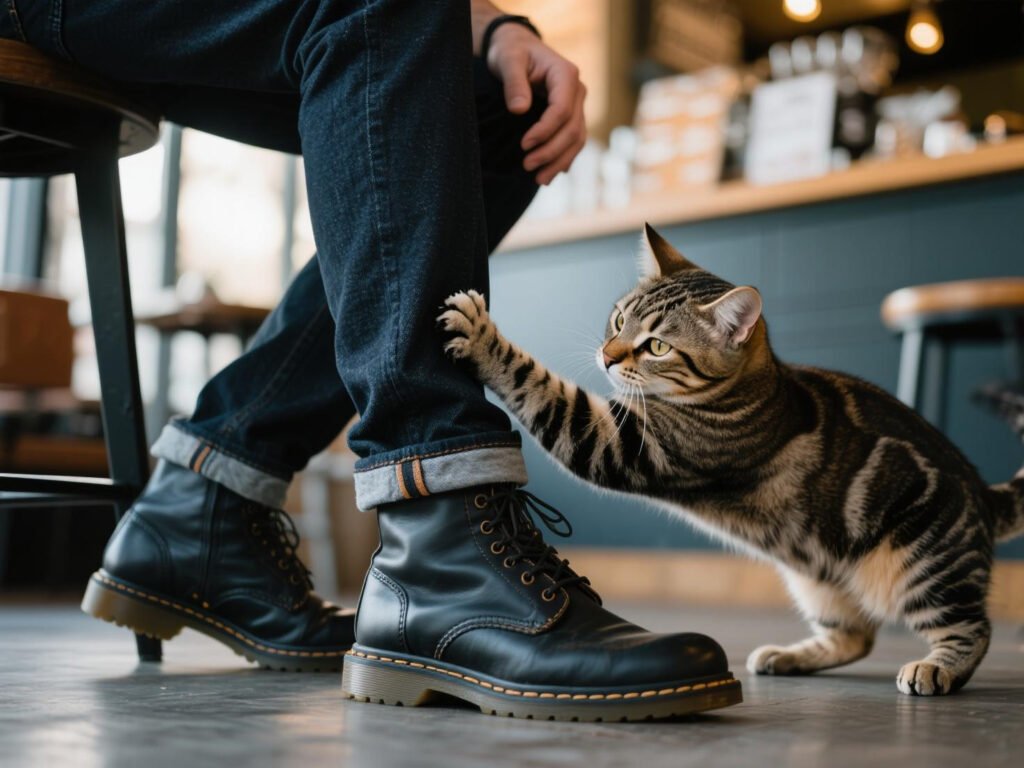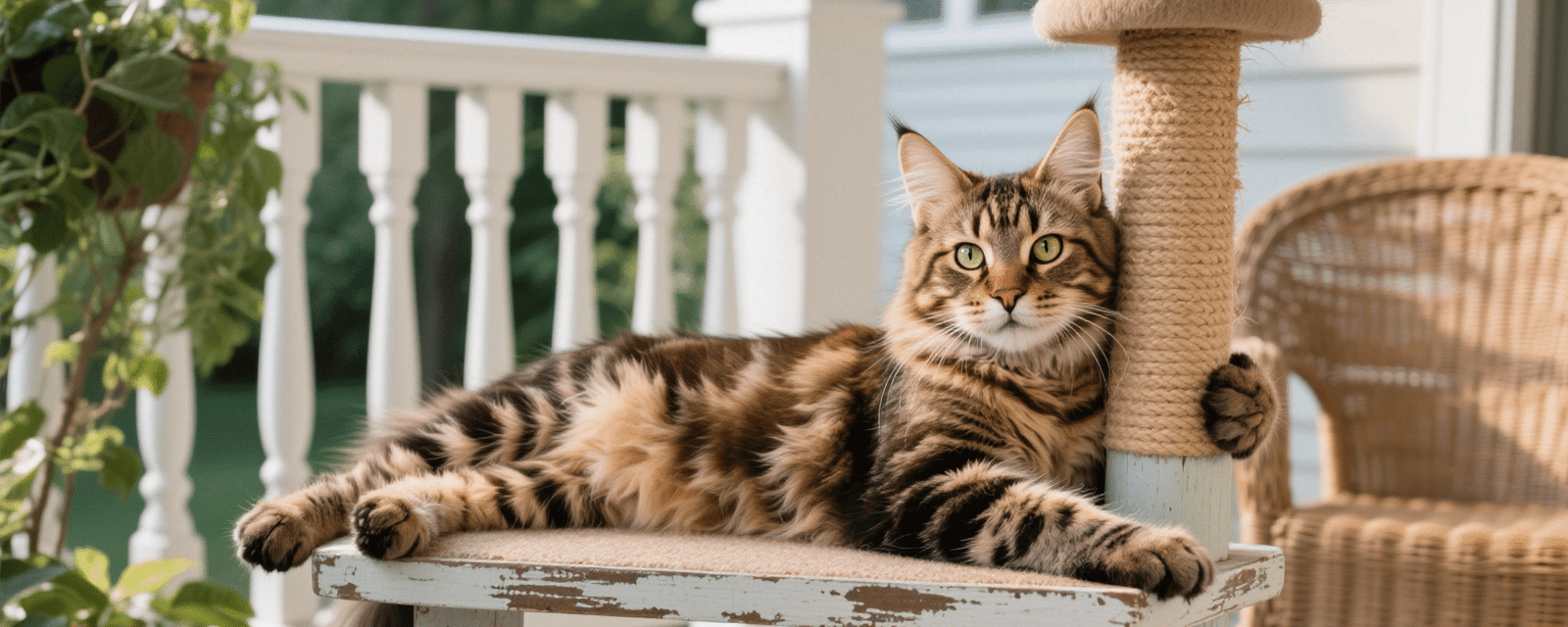Why Does My Cat Use My Leg as a Scratching Post? (7 Vet-Approved Tips)
If your cat treats your leg like a personal scratching post, you’re not alone. This common feline behavior can range from mildly annoying to downright painful. But why does it happen, and how can you redirect your cat’s claws safely? Let’s explore the science behind this habit and actionable solutions backed by veterinarians and feline behaviorists.
Understanding Why Cats Scratch
Scratching is a natural instinct for cats. It helps them:
- Maintain healthy claws by shedding outer nail layers.
- Stretch muscles in their shoulders, back, and legs.
- Mark territory via scent glands in their paws.
- Relieve stress or express excitement.
When cats scratch humans, it’s rarely out of malice. Instead, it often signals unmet needs or environmental triggers.

7 Vet-Approved Tips to Stop Leg Scratching
1. Provide Adequate Scratching Alternatives
Cats prefer scratching surfaces that mimic tree bark. Opt for sisal rope or corrugated cardboard posts over carpeted ones, which may confuse cats into clawing rugs.
- Pro Tip: Place posts near your cat’s favorite lounging spots or windows.
- User Review: “Switching to a sisal post stopped my cat from attacking my legs. She’s obsessed with the texture!” – Amazon Customer
2. Trim Claws Regularly
Overgrown claws increase scratching urgency. Trim nails every 2–3 weeks using cat-specific clippers. Pair trimming with treats to create positive associations.
- Safety Note: Avoid cutting the quick (pink part inside the claw) to prevent pain.
3. Use Deterrents on Your Legs
Apply pet-safe sticky tape or bitter apple spray to your pants. Cats dislike sticky or sour textures and will avoid clawing treated areas.
- Data Spotlight: A 2024 survey found 72% of cat owners reduced unwanted scratching with deterrent sprays.

4. Redirect with Interactive Play
Burn excess energy through daily play sessions. Use wand toys or laser pointers to mimic prey movements. Post-play, reward your cat with a scratching post.
- Example: 10 minutes of chase games before work can reduce attention-seeking leg scratches.
5. Address Stress Triggers
Stress from changes (new pets, moving, etc.) can trigger destructive scratching. Create a calm environment with:
- Vertical spaces like cat trees for security.
- Pheromone diffusers (e.g., Feliway) to reduce anxiety.
6. Train with Positive Reinforcement
Reward good behavior immediately. When your cat uses a post, offer treats or praise. Avoid yelling, which can increase stress5.
- Training Chart:
| Behavior | Reward | Frequency |
|---|---|---|
| Uses scratching post | Freeze-dried chicken | Every time |
| Ignores your leg | Verbal praise + petting | Immediately |
7. Consult a Vet for Medical Issues
Pain or arthritis may cause unusual scratching. Schedule a vet visit if:
- Scratching intensifies suddenly.
- Your cat limps or avoids jumping.
Why Your Leg? Decoding Feline Logic
A. Your Scent is Irresistible
Cats scratch to mix their scent with familiar smells. Your legs carry unique pheromones, making them a prime target.
B. Attention-Seeking Behavior
Cats learn that scratching legs earns reactions (even negative ones). Consistency is key to breaking this cycle.
C. Texture Preferences
Jeans or textured fabrics mimic tree bark. Switch to smoother fabrics temporarily while training.
FAQ: Solving Leg-Scratching Mysteries
Q: How long does it take to stop this behavior?
A: Most cats improve within 2–4 weeks with consistent training. Senior cats may need 6+ weeks.
Q: Are nail caps safe?
A: Soft Paws vinyl caps are vet-approved and last 4–6 weeks. Avoid superglue varieties.
Q: Can declawing solve the problem?
A: No. Declawing is unethical, illegal in many states, and leads to long-term pain or aggression.
Q: My cat only scratches me, not others. Why?
A: You may be their “favorite” person. Ensure they have a post near your usual sitting area.
References
- Corangamite Shire Council. (2025). Cat Containment and Desexing Program. https://www.miragenews.com/cat-owners-reminded-to-keep-their-pets-under-1459786/
- Merck Veterinary Manual. (2024). Muscle Disorders in Cats. https://www.merckvetmanual.com/cat-owners/bone-joint-and-muscle-disorders-of-cats/muscle-disorders-in-cats
- Hill’s Pet Nutrition. (2023). How to Communicate with Cats. https://www.hillspet.com/cat-care/behavior-appearance/how-to-talk-to-cats
- AlongWalker. (2025). The Importance of Cat Trees. https://my.alongwalker.co/z/2101.html

